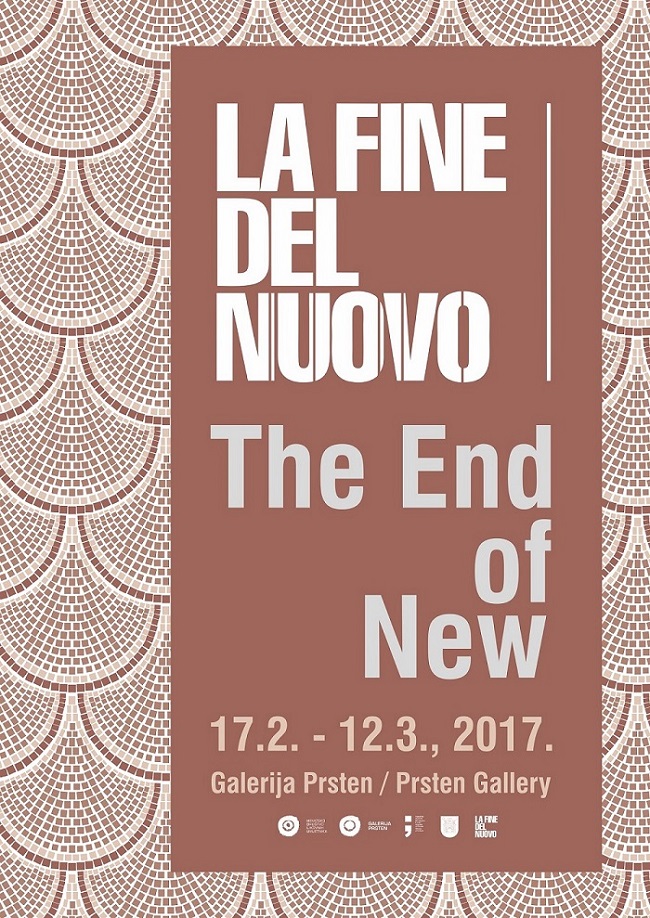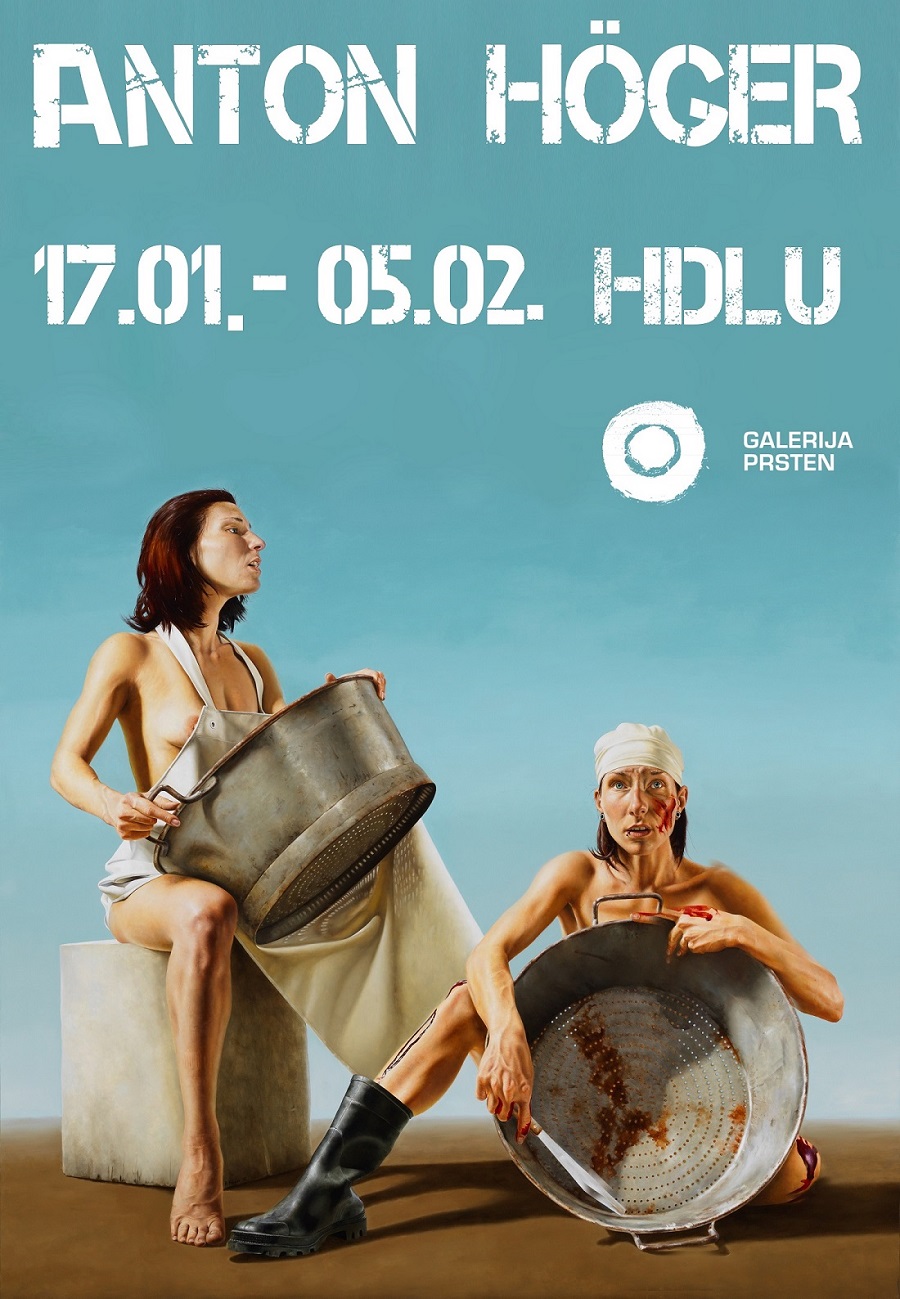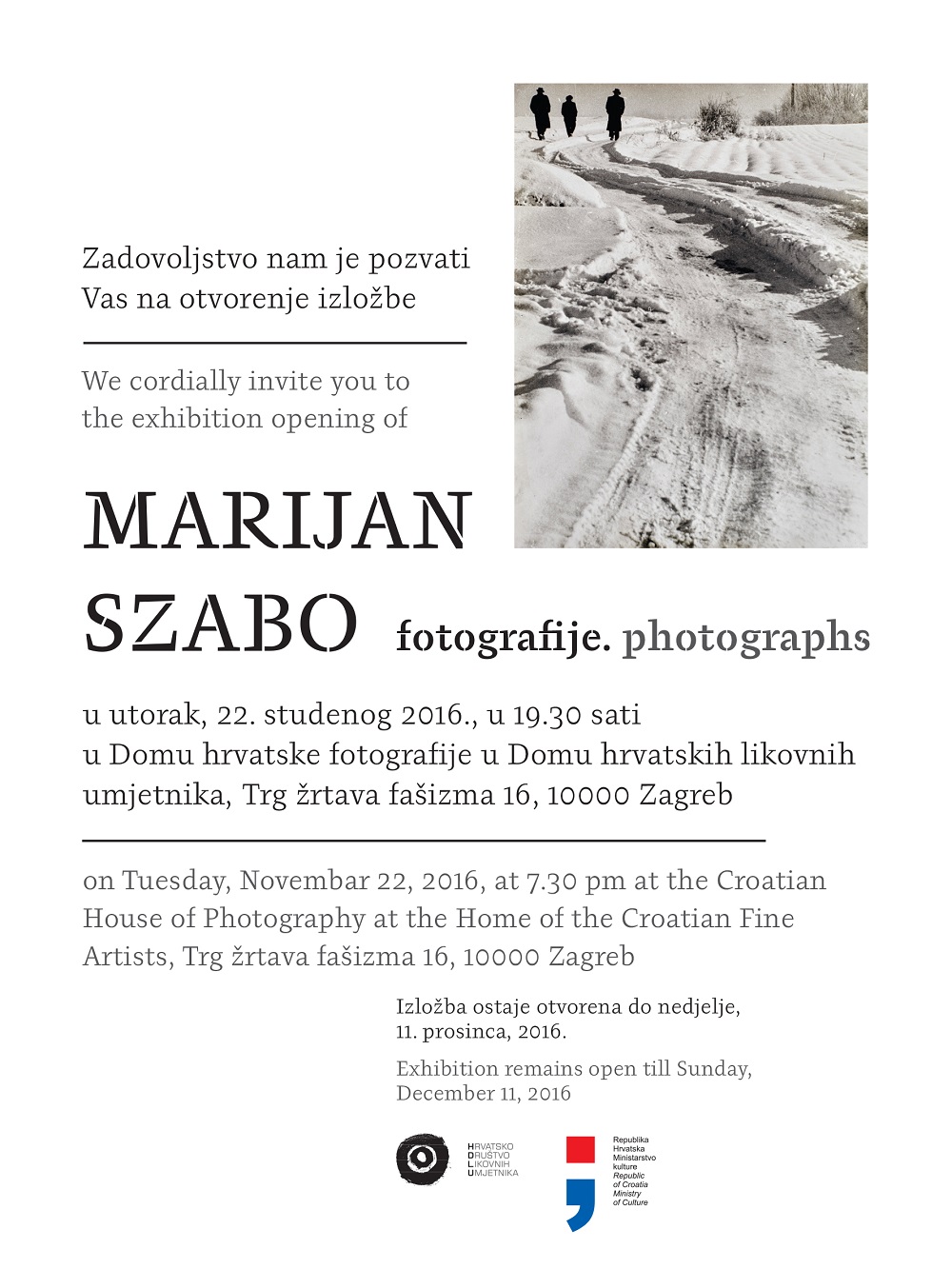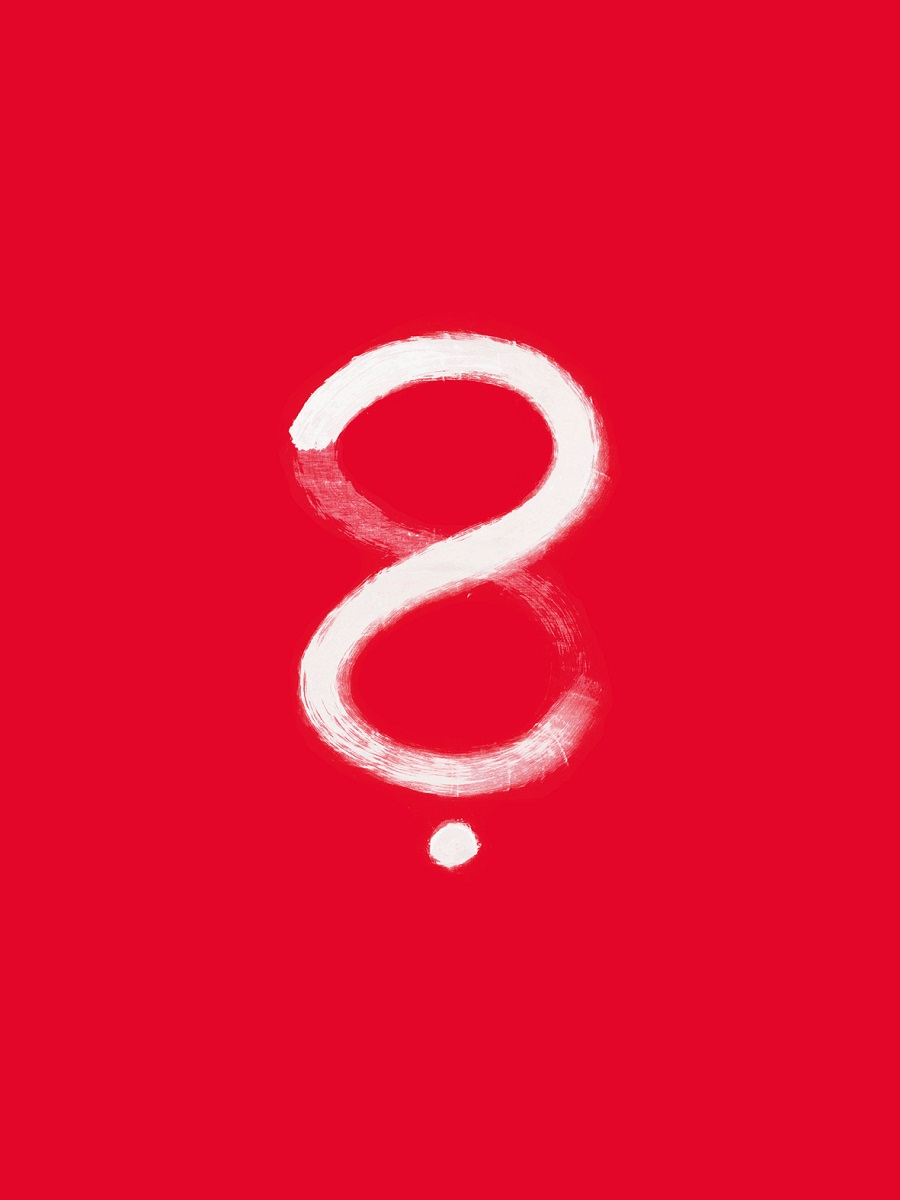Category: Exhibitions
Maja Rožman
“A Canvas is Never Empty”
a part of dissertation
“PUSHING THE BOUNDARIES:
The Position and Role of Printmaking in Contemporary Art”
March 16 – 26, 2017
PM Gallery

Maja Rožman’s solo exhibition “PUSHING THE BOUNDARIES: The Position and Role of Printmaking in Contemporary Art” will open in the PM Gallery of the Home of the Croatian Association of Artists on Thursday, 16 March 2017, at 19:00 h. The exhibition is a part of Maja’s dissertation, mentored by Associate Art Professor Mirjana Vodopija and Ivana Mance, PhD.
“A Canvas is Never Empty” is Robert Rauchenberg’s statement and the name of the last of the three planned exhibitions related to the exploration of the printmaking medium, which Maja Rožman has been engaged with in the last couple of years as a part of her doctoral dissertation titled “PUSHING THE BOUNDARIES: The Position and Role of Printmaking in Contemporary Art”. The dissertation was created within the framework of doctoral studies at the Academy of Fine Arts in Zagreb.
The entire study is based on the assumption that printmaking is an active participant and initiator of the main developments and trends in contemporary art and that fundamental principles of printmaking can be reinterpreted to achieve a shift from the mere following of tradition towards necessarily more complex phenomenology of printmaking in the context of multimedia art practice.
The purpose of this research is to inquire into traditional conventions and put to test the boundaries of the printmaking medium; to put forward for consideration a new definition of the term printmaking in accordance with contemporary art practices; and to explore the possibility of realization of printmaking’s conceptual potential within the context of contemporary art.
MAJA ROŽMAN was born on 7 January 1981 in Zagreb, Croatia.
Since 2004 she has participated in numerous solo and group exhibitions in the country and abroad. In addition to exhibiting her works, she participated in several Artist-in-Residence programs: Cité Internationale des Arts, Paris (FR); KulturKontakt, Vienna (AT); KunstenaarsLogies, Amersfoort (NL); Cultural City Network Graz (AT); and Platform Garanti Contemporary Art Center, Istanbul (TR). She has received numerous awards and recognitions, such as the Essl Award and VIG Special Invitation in 2011 and the HDLU Award at the 6th Croatian Graphic Triennial in 2012.
Maja lives and works in Zagreb, Croatia.
The exhibition was financially supported by the Ministry of Culture of the Republic of Croatia and the City Office for Culture, Education and Sport Zagreb.
GALLERIES OPENING HOURS
Wednesday to Friday: 11.00 AM – 7.00 PM
Saturday and Sunday: 10.00 AM – 18.00 PM
Closed on Mondays, Tuesdays and holidays
Dom HDLU
Trg žrtava fašizma 16
10000 Zagreb
LA FINE DEL NUOVO | THE END OF THE NEW
Curator: Paolo Toffolutti
Prsten Gallery
February 17 – March 12, 2017

Formal opening of the exhibition LA FINE DEL NUOVO | THE END OF THE NEW will be held on Friday, February 17, at 7.30 pm, and the exhibition will stay open until March 12, 2017.
The project brings an itinerant exhibition of contemporary art with the title The End of the New that is going to be organized for a year in various Italian towns as well as in Ljubljana and Zagreb throughout the years of 2016-2017. The exhibition is organized by the cultural association Neo from Udine to celebrate the twentieth year of its founding with an exhibition both the same and different in each of its venues, as suggested by its name neo (new), used to redefine contents and aspects of the visual arts starting from 1996.
Artists:
Aurelio Andrighetto, Annalisa Avon, Primož Bizjak, Maria Grazia Cantoni, Carlo Dell’Acqua, Gino D’Ugo, Emilio Fantin, Matteo Fato, Igor Grubić, Silvia Hell, Sandro Mele Luca Galofaro, Sandro Mele and Luca Galofaro, Andrea Morucchio, Andrea Pertoldeo, Robert Pettena, Francesca Piovesan, Francesca Piovesan, Luca Scarabelli, Enrico Siardi, Daniela Spaletra, Saverio Tonoli, Goran Trbuljak, Enrico Vezzi and Luigi Viola
More information – text by Paolo Toffolutti, exhibition curator
La Fine del Nuovo | The End of the New exhibition in Prsten Gallery is financially supported by The Ministry of Culture of The Republic of Croatia, The City Office for Culture, Education and Sports Zagreb and the Department of Culture Sport and Solidarity of Region Friuli Venezia Giulia (Italy).
GALLERIES OPENING HOURS
Wednesday to Friday: 11.00 AM – 7.00 PM
Saturday and Sunday: 10.00 AM – 18.00 PM
Closed on Mondays, Tuesdays and holidays
Dom HDLU
Trg žrtava fašizma 16
10000 Zagreb
Anton Franz Höger
BALANCE
January 17 – February 05, 2017
Ring Gallery

The Home of the Croatian Association of Artists have the honour to present the work of the famous German artist, painter Anton Franz Höger.
Formal opening of the exhibition BALANCE will be held on January 17, 2017, and the exhibition will stay open until February 5, 2017.
The exhibition will give an overview of Höger’s work from 2003 onwards, which includes highly valued works of art that have already been exhibited in prestigious galleries in Montreal, New York, Munich, Nuremberg and other cities.
This surprise for the local audience has been selected and curated by Željko Marciuš, and the exhibition is a result of cooperation between the Croatian Association of Artists and Henry Stag Art Management Production Company.
It will be set in the Ring Gallery, the largest gallery of the Croatian Association of Artists, which stretches over 700 m2 and thus provides enough space for more than 40 works created by this extraordinary artist.

Anton Franz Höger
Anton Franz Höger is a German painter born on October 30, 1956 in Munich. He is a member of the Vienna School of Fantastic Realism, founded by five writers and painters, including Ernst Fuchs.
Although he graduated in the late 70s of the last century, he fully dedicated himself to painting only in 2000. ”Vienna School“, Höger’s artistic origin, is characterized by unreal, dreamy motifs in opulent Mannerist style, elaborate techniques of the old Italian and Dutch masters.
Despite the admiration towards the artistic finesse of the old masters and eccentric and dynamic Baroque painting that can be seen as a natural basis of Höger’s art – or Malgeschichte – his paintings contain the essence of philosophical, and go beyond the ‘pure techniques’ of his painting style.
Modern artists, such as Francis Bacon, Andy Warhol, Jasper Johns or Sigmar Polke not only influenced his development, but were also partly interpreted in his work.
Höger’s work deals with social issues, such as the present position of women in the society, or the attempts at the destruction of man manifested by a low-quality TV programme. He also creates thematic corpuses, such as integration, participation and power of the media, as well as rewritings of history. Anton’s paintings are the mirror of our present existence.
Anton Höger’s work should be seen as a part of creative and indicative actualities of our time. In that sense, the deciding factor in his artistic creation full of imagination is not one’s own experience as a consumer of art, but the processes that depend on cognition, which are shown as the essence of truth in modern philosophy.
Höger’s works are exhibited in numerous cities; Montreal (Gora Gallery), New York (Agora Gallery, Chelsea), Munich (Störpunkt), Bamberg (Senger) and Nürnbergu (raum für zeitgenössische kunst), just to name a few.
He has received awards from several New York galleries and art manifestations; Biennale Florenz 2008, Kunstpreis Blau-Orange Coburg, Art Fair Köln, Art Stroke München, NordArt, etc.
Anton Frnz Höger – official web page
GALLERIES OPENING HOURS
Wednesday to Friday: 11.00 AM – 7.00 PM
Saturday and Sunday: 10.00 AM – 18.00 PM
Closed on Mondays, Tuesdays and holidays
Dom HDLU
Trg žrtava fašizma 16
10000 Zagreb
Marijan Szabo
PHOTOGRAPHY
Dom hrvatske fotografije
November 22 – December 11, 2016

Before the invention of photography the past was quite different than it is in this day and age. Many questions and answers related to the existence of this mechanically produced image in the first half of the 19th century can be roughly reduced to a few topics.
The main question is whether the photographic image can produce a work of art. The next question refers to the so-called pure photography and the other one that is not. Then, if the photographic image cannot be art, what is it then. And if the photographic image has produced art, what kind of art, an art separate and special or is it just a part of that generated contingent of images that have been recognized as art regardless of the medium in which they have been realised.
In this context, we can look back in time for a moment upon the photographic work of Marijan Szabo. First of all, it is a historical fact that the name of this photographer is associated with the Zagreb school of photography and its inseparable Fotoklub Zagreb which was founded as a club for amateur photographers in 1892.
It seems as if there is no dilemma within this context as to whether the photographic images are works of art, because the basic assumption is that membership in the club, exhibitions, diplomas and awards are also an alibi for separating the photographic image from the banal and uncreative towards one that has no particular value apart from that of technological correctness. The club is therefore an oasis within which exotic products are grown and in which it becomes desirable to nurture a certain similarity, a so-called school.
Thus, for example, Marijan Szabo arrives at the waterfall in Jajce in 1930 and compositionally places it in the middle of his format. His club colleague William Herrnstein records the same waterfall by moving the frame a little to the left and thus getting another variant, but the technology of photo imaging and the subsequent postproduction in both images are the same: aestheticization and variations become, in effect, a characteristic. All this takes place in the context of examples of photographic production in Europe and partly in America (see Camerawork and Pictorialism), but especially in the context of a certain romanticism of the 1930s (landscapes, folklore), the New Reality (Neue Sachlichkeit) and distant echoes of the radical movements of the Russian avant-garde and the experiment of Bauhaus. The photographic images of Marijan Szabo should be regarded within this context. The charm of these images lies in the enthusiasm towards the landscape that allows a high aestheticization of the image, which in turn becomes largely an independent work of art. This applies to all of his photographic works, when he marvels at the so-called bird’s eye angles or in his later works of the 1960s when he discovers informel characteristics of landscapes. His work ranges from the so-called school and current trends in Western art to the photography which ultimately, on a foggy Winter morning in 1966, near the end of his life, offers quite subjectively the image of a landscape as a personal farewell to the world.
Vladimir Gudac
Marijan Szabo rođen je 21. rujna 1913., a član Fotokluba Zagreb postaje već 1929., pa je kao takav bio jedan od najmlađih obnovitelja i vodećih članova Kluba. Fotografijom se počeo baviti kao srednjoškolac, što će imati presudan utjecaj na njegov daljnji život u kojem se fotografijom bavi profesionalno. Marijan Szabo jedan je od osnivača Zagrebačke škole fotografije, važan je akter stvaranja umjetničke fotografske scene u bivšoj Jugoslaviji i Hrvatskoj i zaslužan je za priznanje statusa fotografije kao čiste umjetnosti. Nepoznat široj publici izlagao je zadnji put samostalno prije pedeset godina u Beču. Umro je u Zagrebu 17. prosinca 1967. u pedeset i četvrtoj godini života. Marjana Szabu karakterizira osobna percepcija koja ga odvaja od tradicionalizma toga doba. Szabova su preokupacija ljudi u pejzažima. Služio se neobičnim kutevima snimanja kako bi izbjegao konvencionalne načine promatranja. Koristi nizove i elemente krovova, stepenica i predmeta kako bi stvorio apstraktne konstruktivističke forme. Svjetlo mu je glavni element slike s kojim gradi geometriju i dubinsku perspektivu slike. Duhovnost mu je važnija od tehnicizma slike. Istraživački koncept izložbe nepoznatih radova vraća Szabu na umjetničku scenu, ali i postavlja pitanje zbog čega umjetnici padaju u zaborav. Projekt aktualizira pomalo zaboravljenog fotografskog umjetnika te ga samostalnom izložbom predstavlja stručnoj i široj javnosti. Projekt je doprinos očuvanju hrvatske kulturne baštine i razvoju hrvatske fotografije. Skupljati fotografsku zbirku u hrvatskom netržišnom likovnom okruženju nije lak izazov. Osim velikoga znanja o fotografskoj građi i materijalnih sredstava potrebna je i velika strast za fotografskom umjetnošću. Petar Smiljanić, kolekcionar suvremene umjetnosti i fotografije, ustupio nam je fotografije iz vlastite zbirke za ovu izložbu. Bez njegove podrške ova izložba ne bi bila moguća. Stoga mu se Dom hrvatske fotografije posebno zahvaljuje. Hrvatski dom fotografije programski se bavi isključivo medijem fotografije. Izlagat će i zastupati pretežito hrvatske i inozemne stare majstori fotografske umjetnosti 19. i 20. stoljeća koji su utrli put širokom prihvaćanju fotografije kao nezavisnog i ravnopravnog medija sa svim ostalima umjetničkim medijima. Hrvatski dom fotografije bit će otvoren i za mlađe autore te etablirane umjetnike koji koriste eksperimentalnu, tradicionalnu i digitalnu fotografiju.
Programski cilj galerije jest kreiranje ravnoteže i dijaloga sa širokim spektrom fotografskih žanrova i tehnika. Hrvatski dom fotografije – Croatian House of Photography – djeluje u izložbenom prostoru Kluba HDLU-a, a pokrenut je s ciljem kontinuiranog unaprjeđenja i proširenja izlagačke djelatnosti Hrvatskog društva likovnih umjetnika. Hrvatski dom fotografije službeno je otvoren 7. travnja 2014., a otvorio ga je u sklopu svoje izložbe slavni Peter Lindbergh.
Fedor Vučemilović
The realization of the exhibition was financially supported by the Ministry of Culture of the Republic of Croatia.
GALLERIES OPENING HOURS
Wednesday to Friday: 11.00 AM – 7.00 PM
Saturday and Sunday: 10.00 AM – 18.00 PM
Closed on Mondays, Tuesdays and holidays
* EXCEPTION: Galleries will be closed for visitors on Thursday, Dec 1 and Friday, Dec 2, and will stay open on Monday, Nov 28 and Tuesday, Nov 29.
Dom HDLU
Trg žrtava fašizma 16
10000 Zagreb
Exhibition of the Awarded Artists of the 32nd Youth Salon:
FRAN MAKEK AND MAK MELCHER
November 10 – December 11, 2016
PM Gallery

The exhibition opening will be held on Thursday, November 10, 2016 at 19:00 h
The exhibition of the awarded artists of the 32nd Youth Salon: Fran Makek and Mak Melcher, will be held as part of the 33rd Youth Salon at the Extended Media (PM) Gallery.
Just to remind you, Mitar Matić, an academic painter who won the Grand Prix of the 32nd Youth Salon, was awarded with a two-month residency in Paris, whereas Fran Makek and Mak Melcher were awarded with two equal second prizes.
At the exhibition of the awarded authors, Fran Makek exhibits a corner sofa using billboard technique on the PM Gallery wall. The artist says that this motif has featured repeatedly in his work, with no apparent reason. It appeared in his early sketches of interior, created while studying at the Academy of Fine Arts, as well as in the drawing Ležaj figuri potjeranoj iz bračnog kreveta [Bed of Figures Banned From Marital Bed], and in a series of Christmas cards from 2013.
By using a curved wall surface as a kind of counterpoint, the artist wants to emphasize the beauty, monumental simplicity and amazing functionality of the corner.
“All men by nature desire to know. An indication of this is the delight we take in our senses; for even apart from their usefulness they are loved for themselves; and above all others the sense of sight. For not only with a view to action, but even when we are not going to do anything, we prefer seeing (one might say) to everything else.“
Aristotel
Mak Melcher exhibits a monumental sculpture. By bringing clay directly from a clay pit to the Gallery, the artist changes the location and context of this noble material. He throws the clay on a pre-constructed and installed wooden construction and shapes it in situ; during these four days the artist transforms the Gallery into his studio.
Mak Melcher sees the duration of the exhibition as the lifespan of his work, that is, its lifecycle – the work is born, it lives and dies during the exhibition; after the exhibition ends it will be destroyed and returned to its original context.
For the artist, the exhibition is a kind of process and experiment and he is not sure how it is going to develop, let alone end, but respecting the natural fundamentals of the material, after shaping the clay he completely leaves the dynamics of changes and transformations to the work.
“The process of drying changes the colour, shape, composition of the work; new relationships are formed. The work literally lives! However, this life does not last long, at least not in terms of our human perception of time. It lasts until the clay dries, cracks, maybe falls off, breaks on the floor.“
GALLERIES OPENING HOURS
Wednesday to Friday: 11.00 AM – 7.00 PM
Saturday and Sunday: 10.00 AM – 18.00 PM
Closed on Mondays, Tuesdays and holidays
* EXCEPTION: The Youth Salon will be closed for visitors on Thursday, Dec 1 and Friday, Dec 2, and will stay open on Monday, Nov 28 and Tuesday, Nov 29.
TICKETS:
20 kn citizens
10 kn students and retirees
10 kn groups (over 5 persons, fare per person)
10 kn for regular members of: ULUPUH, HDD, UHA, ORIS, HULU Split, HDLU Osijek, HDLU Rijeka, HDLU Dubrovnik, HDLU Istra, HDLU Varaždin, upon presentation of valid documents.
Free for regular members of Croatian Association of Artists, AICA, ICOM, Croatian Society of Art Historians and Croatian Journalists’ Association, as well as the students of the Academy of Fine Arts and Art History at the Faculty of Humanities and Social Sciences, upon presentation of valid documents.
Tickets are sold at the Croatian Association of Artists box office, during the opening hours of the exhibition.
For further inquiries regarding the tickets, please contact hdlu@hdlu.hr.
Birte Bosse
MIND IS MOUSE
PM Gallery
October 5-9, 2016

Exhibition opening: Wednesday, October 5, 2016 at 7pm




